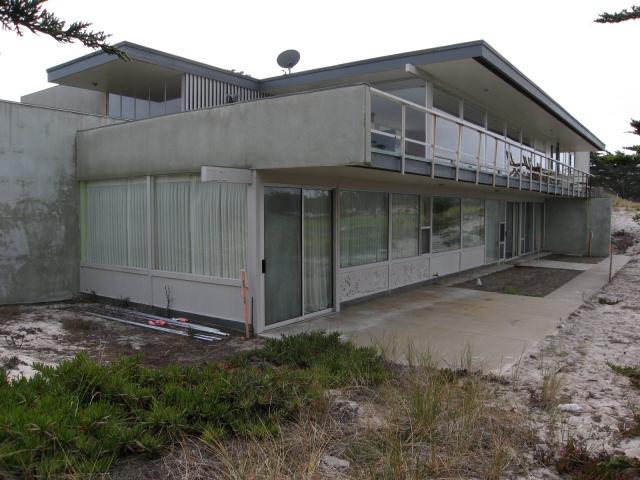We are exceedingly sad to report that yet another exceptional Neutra structure is in peril. This one hits even closer to home for those of us in Northern California because it is right in our own backyard.
Richard Neutra was a particularly prolific designer who gained a great deal of fame during his lifetime. With this notoriety came high profile commissions for wealthy patrons on prime lots and unfortunately many of these prime lots are now becoming targets for a new generation of wealthy individuals looking to make their own mark on the land. Most of the many homes that Neutra designed can be found in Southern California where his studio was located, but we are very lucky to have just under twenty in the Bay Area including five in the East Bay.
Monterey County can claim only one extant Neutra design, and unfortunately that singular example of his work on the Central Coast is now in danger of being demolished by its current owner. The Connell House is located on an especially picturesque bluff overlooking the Pacific Ocean in Pebble Beach. Its bare plaster walls interspersed with glass seem to rise out of the sand to support the varied horizontal planes that make up its roofs and balconies. It is a beautiful example of Neutra’s later work that would be worthy of preservation even if it were not the only Neutra home in the county.
Please join with Monterey Bay Modernism and The Alliance of Monterey Area Preservationists to prevent the destruction of yet another of our mid-century landmarks. Last year saw the thoughtless demolition of quite a number of important examples of modern design across the United States including Neutra’s Gettysburg Cyclorama. Let’s make sure the Connell house does not suffer the same fate. Make your voice heard.






















